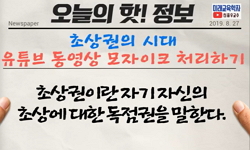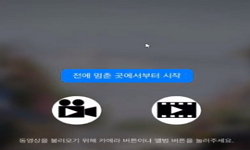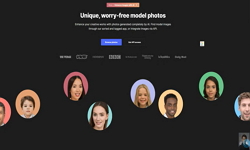The purpose of this study was to discuss the infringements of individuals' image right by mass-media reports and thereby, determine the relationship between freedom of the press and people's right of knowledge. For this purpose, judicial cases were re...
http://chineseinput.net/에서 pinyin(병음)방식으로 중국어를 변환할 수 있습니다.
변환된 중국어를 복사하여 사용하시면 됩니다.
- 中文 을 입력하시려면 zhongwen을 입력하시고 space를누르시면됩니다.
- 北京 을 입력하시려면 beijing을 입력하시고 space를 누르시면 됩니다.
영상보도에 의한 초상권 침해와 보호에 관한 연구 : 판례와 대학생 의식의 차이를 중심으로 = A Study on Infringement of the Image Right by Mass-media and Its Protection: Focused on Judicial Cases and College Students' Perception
한글로보기부가정보
다국어 초록 (Multilingual Abstract)
This study focused on which should take precedence among such legitimate freedom and rights as freedoms of expression, right of knowledge and image right and what are the grounds for such a precedence.
The study points were set up as follows;
First, how is the image right specified by domestic law and regulations?
Second, how can the cases about infringements of image right by mass-media reports be categorized? And what were the grounds for the decisions and judgements of the court?
Third, how do college students perceive the image right and the journalism for that matter?
In order to find the answers to the first question, domestic laws and internal codes of relevant authorities were reviewed. As a result, it was found that current laws specify the image right comprehensively, while internal codes of relevant authorities set the conditions for infringement of image right. In order to meet people's right of knowledge, the mass-media screens should be edited in consideration of people's image right, but freedom of the press or right of expression may take precedence over image right in the reports about socially sensational cases, those accidents invoke people's indignation or other cases relevant to the public interest. In short, the public interest provides the ground for exceptions of image right protection.
In order to answer the second question, domestic judicial cases about infringement of image right were analyzed to understand the trend of image right protection as well as its legal theories.
In most cases, the court decided that image right was infringed on by mass-media if the person himself or herself had not agreed to the report about himself or herself, or if he or she had been reported against the original intention explained to him or her, or if his or her identity had been revealed in a report irrelevant to him or her, or if he or she had been video-taped recklessly as a criminal suspect. After all, most of the judicial cases were about conflict between fact-finding efforts of mass-media and individuals' image right, and the court decided on such cases in favor of individuals' image right. Namely, the court ruled that the mass-media had unjustly and carelessly infringed on people's image right neglecting their right and interest in the name of the public interest. However, such cases are deemed unfair by the broadcasting companies emphasizing freedom of expression and people's right of knowledge.
In order to find the answers to the third question, college students were surveyed for their perception of image right and mass-media for that matter. As a result, it was found that as the individualism is expanding, college students tend to be more conscious of people's self-esteem and protection of people's rights as subjects of personality right. As people's personality right is protected by law, they think that personal rights and interests are starting points and centripetal points. However, since they feel that people's social responsibility may take precedent over their personal rights and interests as far as the mass-media reports reflect public interest and concern, which suggests that most of the college students may be generous to exposure of their identities.
On the other hand, college students feel that mass-media tend to impede people's judgement about the public interest by featuring the cases sensationally to protect the private interests of mass-media, and therefore, that mass-media are much responsible for themselves. Moreover, college students are seriously concerned about the mass-media reports infringing on people's personal rights and interests. Such a finding attributable to college students' enhanced sense of rights and particularly image right may prove their wish that our journalism would restrain themselves from the expansive legworks increasing in name of people's right of knowledge.
The purpose of this study was to discuss the infringements of individuals' image right by mass-media reports and thereby, determine the relationship between freedom of the press and people's right of knowledge. For this purpose, judicial cases were reviewed to analyze the infringements of image right and suggest the ways to protect it.
This study focused on which should take precedence among such legitimate freedom and rights as freedoms of expression, right of knowledge and image right and what are the grounds for such a precedence.
The study points were set up as follows;
First, how is the image right specified by domestic law and regulations?
Second, how can the cases about infringements of image right by mass-media reports be categorized? And what were the grounds for the decisions and judgements of the court?
Third, how do college students perceive the image right and the journalism for that matter?
In order to find the answers to the first question, domestic laws and internal codes of relevant authorities were reviewed. As a result, it was found that current laws specify the image right comprehensively, while internal codes of relevant authorities set the conditions for infringement of image right. In order to meet people's right of knowledge, the mass-media screens should be edited in consideration of people's image right, but freedom of the press or right of expression may take precedence over image right in the reports about socially sensational cases, those accidents invoke people's indignation or other cases relevant to the public interest. In short, the public interest provides the ground for exceptions of image right protection.
In order to answer the second question, domestic judicial cases about infringement of image right were analyzed to understand the trend of image right protection as well as its legal theories.
In most cases, the court decided that image right was infringed on by mass-media if the person himself or herself had not agreed to the report about himself or herself, or if he or she had been reported against the original intention explained to him or her, or if his or her identity had been revealed in a report irrelevant to him or her, or if he or she had been video-taped recklessly as a criminal suspect. After all, most of the judicial cases were about conflict between fact-finding efforts of mass-media and individuals' image right, and the court decided on such cases in favor of individuals' image right. Namely, the court ruled that the mass-media had unjustly and carelessly infringed on people's image right neglecting their right and interest in the name of the public interest. However, such cases are deemed unfair by the broadcasting companies emphasizing freedom of expression and people's right of knowledge.
In order to find the answers to the third question, college students were surveyed for their perception of image right and mass-media for that matter. As a result, it was found that as the individualism is expanding, college students tend to be more conscious of people's self-esteem and protection of people's rights as subjects of personality right. As people's personality right is protected by law, they think that personal rights and interests are starting points and centripetal points. However, since they feel that people's social responsibility may take precedent over their personal rights and interests as far as the mass-media reports reflect public interest and concern, which suggests that most of the college students may be generous to exposure of their identities.
On the other hand, college students feel that mass-media tend to impede people's judgement about the public interest by featuring the cases sensationally to protect the private interests of mass-media, and therefore, that mass-media are much responsible for themselves. Moreover, college students are seriously concerned about the mass-media reports infringing on people's personal rights and interests. Such a finding attributable to college students' enhanced sense of rights and particularly image right may prove their wish that our journalism would restrain themselves from the expansive legworks increasing in name of people's right of knowledge.
목차 (Table of Contents)
- 목차
- 제 1 장 서론 = 1
- 제 1 절 문제제기 및 연구목적 = 1
- 제 2 절 연구문제 및 연구방법 = 2
- 제 3 절 논문구성 = 4
- 목차
- 제 1 장 서론 = 1
- 제 1 절 문제제기 및 연구목적 = 1
- 제 2 절 연구문제 및 연구방법 = 2
- 제 3 절 논문구성 = 4
- 제 2 장 초상권에 관한 이론적 논의 = 5
- 제 1 절 언론의 자유 = 5
- 제 2 절 국민의 알 권리 = 7
- 1. 개념정의 및 역사적 정립과정 = 7
- 2. 법적성격 = 9
- 제 3 절 개인의 초상권 = 10
- 1. 개념정의 및 유래 = 10
- 2. 법적성격 = 11
- 제 4 절 영상보도 = 12
- 1. 개념 및 특성 = 12
- 2. 영상보도에서의 초상권 = 14
- 제 3 장 국내의 초상권 관련 규정 및 영상보도에 의한 초상권 침해사례 (판례중심) = 15
- 제 1 절 국내 초상권 관련 규정 = 15
- 제 2 절 국내 판례로 보는 초상권 침해 형태 = 24
- 1. 초상권 침해 = 25
- 2. 사생활과 관련된 초상권 침해 = 27
- 3. 명예와 관련된 초상권 침해 = 33
- 4. 범죄사건과 관련된 초상권 침해 = 41
- 5. 방송광고와 관련된 초상권 침해 = 43
- 제 4 장 설문조사연구 - 대학생의 초상권에 대한 인식 = 47
- 제 1 절 연구방법 = 48
- 제 2 절 설문조사결과 = 51
- 제 5 장 결론 = 60
- 제 1 절 결과 및 논의 = 60
- 제 2 절 연구의 한계 및 제언 = 66
- 참고문헌 = 67
- ABSTRACT = 71












